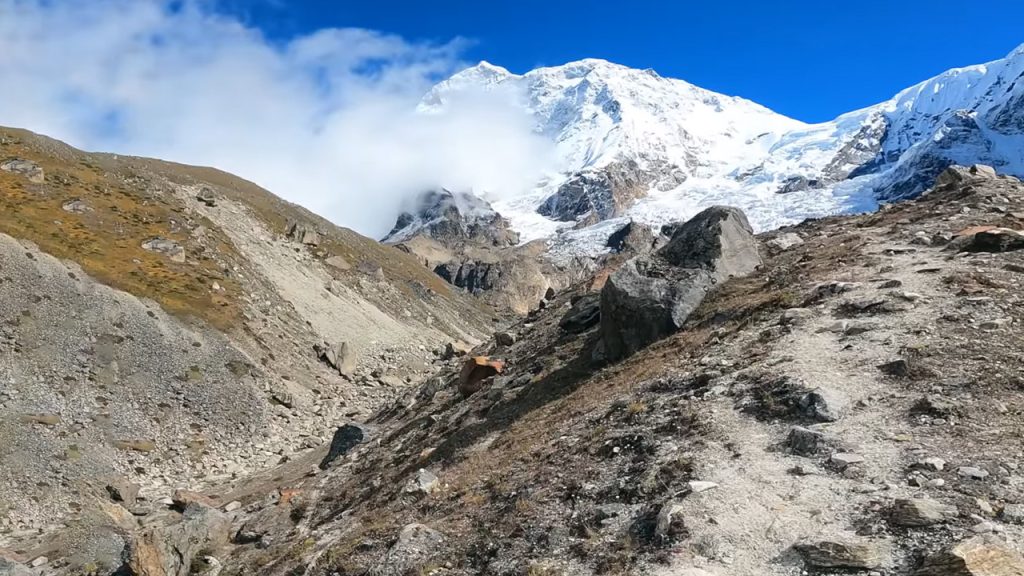
Category: Makalu
Makalu Barun National Park was established in 1992 as an eastern extension to the Sagarmatha National Park and is the world’s only protected area with an elevation gain of more than 8000m thus encompassing climatic zones and vegetation ranging from tropical forest to Himalayan-type tundra wilderness.
The northern border of the National Park is also the northern border of Nepal with Tibet.
Makalu 8463m, the fifth highest mountain in the world has as its neighbors, Chamalang 7319m Baruntse 7129m, and Mera Peak 6654m, the highest trekking peak in Nepal, these are all inside the national park.
The idea of preserving the unique biological and cultural features of the Makalu Barun area was conceived in 1984 by Daniel C. Taylor then president of The Mountain Institute. Taylor’s initial interest in the Barun Valley had been prompted by his two-decades-long search for the yeti, and alleged tracks found there by Cronin and McNeely in 1972 Taylor led fieldwork in the Barun Valley in 1983 with naturalist Robert L. Fleming Jr.
Their discovery of further enigmatic footprints–where the scientific riddle of the yeti was finally explained by being a juvenile Asiatic Black Bear making overprints of hind paw onto forepaw in which in the juvenile period the inner digit of the forepaw becomes outwardly displaced prompted extensive ecosystem fieldwork by The Mountain Institute led by Taylor, Fleming, Nepali botanist Tirtha Shrestha.
Today in all national park areas, Buffer Zones have been established to help the local people work in harmony with the park administration, the Department of National Parks and Wildlife Conservation. This innovative park management approach encourages local people to become actively involved in conserving their rich cultural heritage and protecting forests and natural resources, upon which their lives depend.
The inaccessible valleys of the Barun River, a glacier-fed tributary to the Arun River, and of its tributary Saldima, treasure some of the last remaining pristine forests and alpine meadows in Nepal. They have been designated as a Strict Nature Reserve, the first in Nepal, to protect natural ecosystems and processes in an undisturbed state for scientific study, environmental monitoring, education, and the maintenance of genetic resources.
This Strict Nature Reserve area in Makalu-Barun National Park also connects via two relatively low-altitude, easy for wild animals to cross, passes (less than 4000m) to the ten-times larger Qomolangma National Nature Preserve on the Chinese Tibetan side of the international border.
Access to the Makalu region is either by foot from the Sagamartha National Park or by air flying into Tumlingtar, a road has been pushed through but this is very susceptible to local conditions.
Many treks in this region are included in the Travel Nepal Blog Trekking category.


